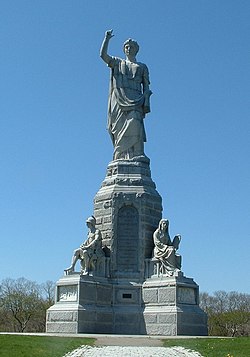Hammatt Billings | |
|---|---|
 Hammatt Billings, 1856 | |
| Born | June 14, 1818 Boston or Milton, Massachusetts, United States |
| Died | December 14, 1874 (aged 56) New York City, United States |
| Nationality | American |
| Occupation | Architect |








Hammatt Billings (June 14, 1818 – November 14, 1874) was an artist and architect based in Boston who was active during the third quarter of the nineteenth century. As an illustrator he was responsible for the illustrations of the first two editions of Uncle Tom's Cabin which contributed to the novel's influence. His architectural career culminated in College Hall (1875), the original building of Wellesley College, and the National Monument to the Forefathers (1889). From c. 1845 to 1851 and from 1866 until his death in 1874 he worked in partnership with his brother Joseph Edward Billings, an architect and engineer, under the name H. & J. E. Billings.
